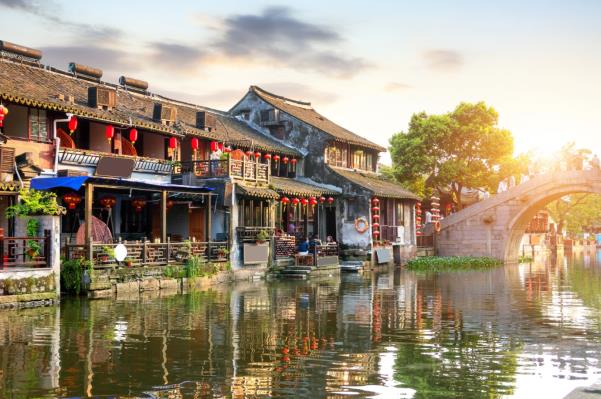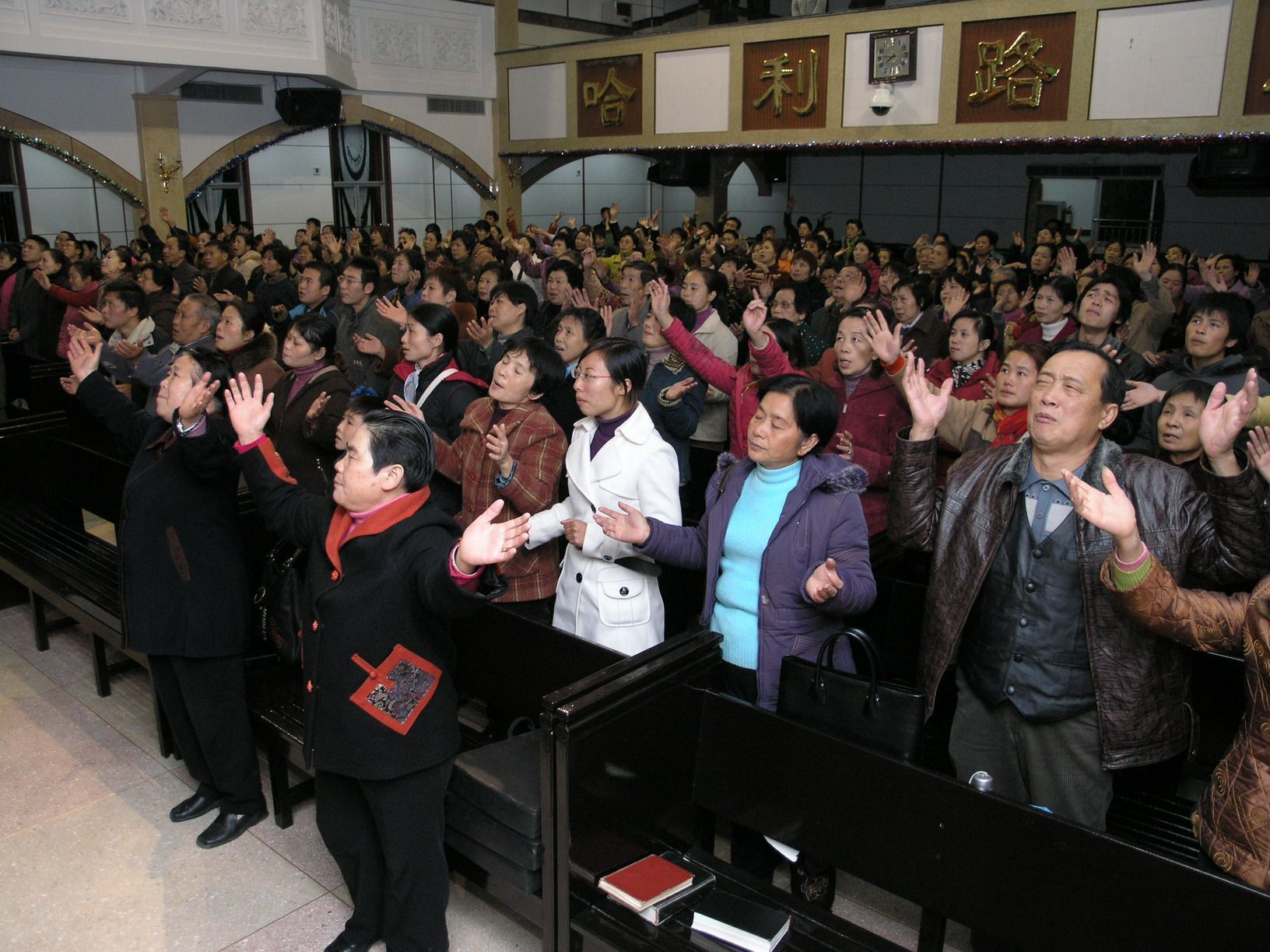Introduction to Zhejiang Province
A Small, Influential Province
Zhejiang, which means 'Silent River,' derives its name from the Qiantang River which flows past the capital city of Hangzhou before emptying into Hangzhou Bay.
Although in size Zhejiang is one of the smallest provinces in China, it had the tenth highest population at the time of the 2010 census, with 54.4 million people. Due to rapid immigration from other parts of China, Zhejiang's population is expected to exceed approximately 62 million by 2020.
With an area of just over 39,000 square miles (101,800 sq. km), Zhejiang is slightly smaller than the US state of Kentucky, but contains approximately 13 times as many people. By another comparison, Zhejiang covers an area about 80 percent the size of England, and contains a slightly higher population.
For centuries Zhejiang has been culturally divided into two broad categories of people. The inland mountainous parts of the province remained impoverished for many generations, while millions of families earned a good living from fishing and trading along the coastline of the East China Sea, which has more than 18,000 offshore islands (the most of any province in China).The coastal people were shaped by contact with the outside world and its ideas, customs and religions.
For many centuries the capital city, Hangzhou, has been regarded as a place of great natural beauty, which gave rise to a famous Chinese saying: "Heaven above, Suzhou and Hangzhou beneath." Indeed, the whole province of Zhejiang has been described as a place of "great beauty and variety: forest-clad mountains and hills, lovely rivers and streams, ancient bridges of architectural charm, bamboo groves, vineyards, world-famous tea plantations and walled cities of which Hangzhou, the capital, is the queen."[1]
Although the history of Hangzhou City dates back to the start of the Qin Dynasty (221 BC), many centuries passed before Zhejiang came to national attention. The rulers of the Tang Dynasty (618-907 AD) were "the first to pay much attention to the Zhejiang and Fujian coastal regions, and they brought them fully into the Sinitic world."[2] The region was first connected to the rest of China when the Grand Canal reached its southern terminus in the province in the seventh century.
After Zhejiang gained a reputation for its bountiful harvests, millions of tons of produce were transported along the canal to other parts of China, feeding the impoverished northern masses during times of famine. The people of Zhejiang benefited financially from the natural bounty of their land, and many areas became wealthy. The province also gained the nickname 'the Land of Silk' during this time, and today Zhejiang still produces more than a third of China's raw silk.
A Patchwork of Languages
Prior to the seventh century, Zhejiang was inhabited by a myriad of different ethno-linguistic groups. Some were the ancestors of minority groups still found in China today, while others exhibited a curious mixture of tribal and Chinese culture. Dialects and languages changed frequently as travelers made their way through the province, so that even villagers living on opposite banks of a river spoke different dialects and struggled to communicate with one another.
When early Evangelical missionaries arrived in Zhejiang they too struggled with the linguistic barriers. The southern parts of the province were home to a complex collection of languages and dialects, including the Min varieties spoken by millions of people across the border in Fujian. In 1878, the missions magazine China's Millions noted: "In the south of Zhejiang, as in the west, the spoken dialects are so peculiar that to work effectually, the dialects of most of the districts have to be specially acquired by both native and foreign laborers. On this account our progress is rendered comparatively slow, and our stations as yet are but few."[3]
Even within the same regions of Zhejiang, linguistic varieties were markedly different. The Wenzhou dialect, for example, is so different from other Zhejiang varieties that during China's war with Vietnam in 1979, the Chinese military employed Wenzhou soldiers to communicate secure information, in much the same way as the United States engaged Navajo 'code-talkers' to confuse the Japanese during the Second World War.
After the collapse of the Tang Dynasty in 907, a new period known as the Five Dynasties and Ten Kingdoms emerged. Although these kingdoms lasted only 53 years, boundaries were established along linguistic lines can still be seen today. Historian Leo Moser noted: "Along the coast, the territory of the kingdom of Wu-Yue included almost exactly those parts of Zhejiang and Jiangsu provinces where the Wu sub-language is now spoken."[4]
Wu was established as the dominant spoken Chinese language in Zhejiang. Only in recent decades has Mandarin emerged to threaten its dominance, having become the national standard for all education and media after the founding of the People's Republic of China.
Wu continues to be spoken by approximately 90 million people in China today, more than half of whom live in Zhejiang. It was considered so different from other Chinese varieties that missionaries deemed it necessary to produce a distinct translation of the Bible in the Wu language in the early twentieth century.
Other Chinese languages spoken in Zhejiang include Min Nan (also known as Hokkien), which spills across the southern border from Fujian Province; Hakka, and Huizhou, which is spoken only in Chun'an County near Hangzhou.
The Golden Era

The Grand Canal at the ancient town of Xitang in northern Zhejiang.
The greatest era in the history of Zhejiang occurred during the Southern Song Dynasty (1127-1279). To this day, the province is renowned throughout China because of the glory afforded to it during its golden period almost nine centuries ago.
Due to the invasion of northern 'barbarian' tribes, the new rulers of China, based in Beijing, sought to govern from a safer location, so thousands of bureaucrats and scholars traveled down the Grand Canal to Hangzhou, making it their new capital city. The population of Hangzhou is believed to have grown from 500,000 to nearly two million people in just a few decades.
By the time Marco Polo visited Hangzhou (which he called Kinsay) in the early 1280s, the Italian was overwhelmed by its grandeur, calling it "beyond dispute the finest and noblest city in the world."[5] When his descriptions reached Europe, most people refused to believe that a city in the Orient could be far more advanced than Venice, which they considered beyond compare. Many accused Polo of exaggeration, but subsequent findings and the testimony of other early visitors have supported his claims. Polo described Hangzhou and its people in detail, saying,
"The city is so great that it has a hundred miles of compass. And there are in it 12,000 bridges of stone, for the most part so lofty that a great fleet could pass beneath them. And let no man marvel that there are so many bridges, for you see the whole city stands as if it were in the water and surrounded by water, so that a great many bridges are required to give free passage about it....
Inside the city there is a lake which has a compass of some 30 miles: and all around it are erected beautiful palaces and mansions, of the richest and most exquisite structure that you can imagine, belonging to the nobles of the city. There are also on its shores many abbeys and churches [temples] of the Idolaters. In the middle of the lake are two islands, on each of which stands a rich, beautiful and spacious edifice, furnished in such a style as to seem fit for the palace of an emperor."[6]
The Taiping Destruction
Millions of people have moved into Zhejiang from other parts of China over the centuries, but some of the more significant migrations occurred in the seventeenth century, when the Min Nan sea-faring peoples from Fujian Province colonized the Zhejiang coast. Not only did they bring their distinctive language, but also a myriad of unique customs and a host of female deities.
During the eighteenth century, the city of Wenzhou grew to national prominence and gained a reputation as a center of great wealth. Dominating the trade routes of the day, merchant ships sailed from Wenzhou to much of the known world, trading with Japan, Indonesia, India, and even along the east coast of Africa.
The people of Zhejiang continued to prosper until the Taiping Rebellion from 1850 to 1864, which brought massive devastation to the province. In many towns and counties in western Zhejiang, "90 percent of the inhabitants were killed and villages were totally depopulated."[7] Large tracts of fertile land were left abandoned, which attracted a new wave of migrants from other provinces. Millions entered from Fujian in the south, while others came from the north and west. The Taiping rebels laid siege to the beautiful capital of Hangzhou, "reduced almost the entire city to ashes, annihilated or displaced most of the population, and finally ended Hangzhou's significance as a commercial and trading center."[8]
Zhejiang Today
Like most of China, Zhejiang suffered greatly during the excesses of the Cultural Revolution (1966-76), but the province rebounded strongly and is today looked upon with admiration and envy by many people in poorer parts of China. The province's economic output has become so great in recent decades that people often speak of the "Zhejiang spirit" when describing the work ethic needed to succeed in business.
Zhejiang's major cities are the economic powerhouses of the province. The capital city Hangzhou is home to more than five million people, while Wenzhou, Ningbo and Shaoxing also contribute to the great wealth of the region. Despite ranking 26th in size and tenth in population among China's provinces, Zhejiang boasts the fourth highest gross domestic product (GDP), with only Guangdong, Jiangsu and Shandong providing a greater boost to the national economy. Indeed, Zhejiang's importance to China's prosperity can be seen in the fact that its GDP nearly matches that of the combined output of the massive Beijing and Shanghai municipalities.
During the 1960s and 1970s, the Chinese government believed that if the military in the renegade province of Taiwan should attack the Mainland, the most likely target for invasion would be the coastal areas of Zhejiang, especially the city of Wenzhou. As a result,
"The people of Wenzhou grew accustomed to fending for themselves, beginning first by learning how to produce small consumer items like shoes and umbrellas, which they sold on the side to help them subsidize their meagre incomes. These items were made in small home or village operations...and eager Wenzhou natives traveled to different parts of the country to sell their wares....
In 1984, when Deng Xiaoping opened the door for the city to become a coastal development area, the Wenzhou people were quick to establish their own manufacturing and commercial centers. Today the city produces electrical appliances and machinery; plastic, metal, chemical and leather products; and clothing and textiles.
Wenzhou businessmen have a reputation for being enterprising, to say the least, and are well known for their aggressive and cut-throat approach to business. They have also established a wide range of business interests overseas, including restaurants, retail shops and wholesale distributorships."[9]
In recent decades, multitudes of migrant workers from across China have surged into Zhejiang in search of work. As a result, the population of Wenzhou Prefecture grew markedly from 7.5 million to 9.1 million in the decade between 2000 and 2010. Province-wide, the population mushroomed by more than eight million people over the same period. The massive influx of mostly impoverished farmers has created social challenges for Zhejiang, as many migrants found it more difficult to achieve their dreams than they imagined. Multitudes have ended up homeless, and crime has escalated.
Zhejiang is one of China's most ethnically-cohesive provinces. Remarkably, 98.8 percent of its people are Han Chinese. The only ethnic minority groups with significant populations in the province are the She people (170,000 people or 0.5 percent) and the Tujia and Miao, who each number approximately 50,000 people. All three of these groups have become highly Sinicized and are not easily distinguishable from the Han in the locations where they live. Even Hui Muslims, who are found scattered throughout every province of China, scarcely make a mark in Zhejiang with a population of only 20,000 people.
© This article is an extract from Paul Hattaway's book 'Zhejiang: The Jerusalem of China'. You can order this or any of The China Chronicles books and e-books from our online bookstore.
1. Leslie T. Lyall, God Reigns in China (London: Hodder & Stoughton, 1985), pp. 110-11.
2. Leo J. Moser, The Chinese Mosaic: The Peoples and Provinces of China (Boulder, CO: Westview Press, 1985), p. 33.
3. China's Millions (April 1878), p. 53.
4. Moser, The Chinese Mosaic, p. 37.
5. Marco Polo, The Travels of Marco Polo: The Complete Yule-Cordier Edition, Vol. 2 (New York: Dover Publications, 1903), p. 185.
6. Polo, The Travels of Marco Polo, Vol. 2, pp. 185-7.
7. Moser, The Chinese Mosaic, p. 200.
8. Michael Buckley et al., China: Travel Survival Kit, 4th edition (Hawthorn, Australia: Lonely Planet, 1994), p. 423.
9. David Wang with Georgina Sam, Christian China and the Light of the World: Miraculous Stories from China's Great Awakening (Ventura, CA: Regal, 2013), p. 110.





